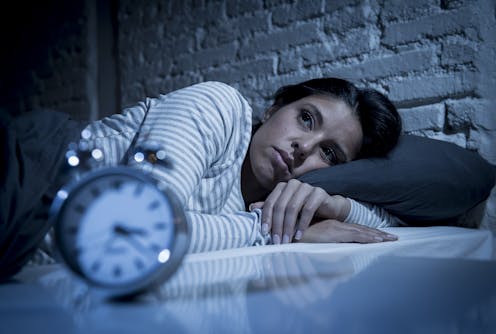Why can’t I sleep? 4 ways climate change could be keeping you up at night and what you can do about it
- Written by The Conversation

Tossing and turning on sweltering summer nights? You’re not alone.
As temperatures rise due to climate change, our sleep is becoming shorter and more disrupted.
But it’s not just the heat keeping us awake – climate change creates multiple challenges to our nightly slumber, which may be affecting our health.
What happens when we don’t get enough sleep?
Sleep isn’t just rest – it’s vital for our health.
Adults need at least seven hours per night to maintain cognitive function, memory and emotional balance. Poor sleep immediately impacts mood and attention, while chronic sleep issues increase risk of diabetes, obesity, depression, heart disease and even premature death.
So, how is climate change impacting our sleep?
1. Overnight temperatures are rising
Our circadian rhythm – that internal biological clock – requires our internal body temperature to drop at night for quality sleep. The ideal room temperature for sleep is 15°C to 19°C.
Rising outdoor temperatures make this body temperature increasingly difficult to maintain, especially for those without air conditioning. Paradoxically, widespread air conditioning use further contributes to climate change by using fossil-energy, which creates emissions.**
Research shows the impact on our sleep is already measurable. Our 2023 study of 375 Australian adults found people lost 12 minutes per night on the hottest nights compared with the coldest (31°C vs 0.4°C overnight temperatures across the year).
Globally, scientists predict we could lose 50–58 hours of sleep annually per person by the end of the century if warming continues unchecked. This is one way climate change will make geographic inequalities worse.
2. Climate change is worsening air pollution
Hot and dry conditions typically tend to make air pollution worse. As climate change increases the number of hot days and frequency of heatwaves, the rate of wildfires will increase. This adds another source of air pollution, increasing emissions of harmful greenhouse gases and airborne particles.
Air pollution is linked with poorer health, increased risk of chronic illness and early death.
Air pollution also impacts our sleep through breathing issues, inflammation and potentially disrupting our nervous system’s ability to regulate sleep.
And in winter, households burn wood for residential heating, adding another source of climate-impacting emissions. Air pollution from wood fires worsens respiratory conditions such as asthma, bronchitis and chronic obstructive pulmonary disease, further compromising sleep.
3. Extreme weather events are becoming more frequent and severe
Whether it’s wildfires, heatwaves, flooding or cyclones, extreme weather is becoming more common and more intense.
With these extreme events comes widespread upheaval in affected communities. From mass population displacement to loss of shelter, security and essential resources, sleep is likely way down the list of priorities when dealing with natural disasters.
However, sleep disturbances are common after these extreme events. A review of global research on wildfire survivors found two-thirds experienced insomnia and more than a third reported nightmares. These effects persisted up to 10 months after the disaster.
4. Climate anxiety is on the rise
Even if you haven’t directly experienced an extreme weather event, the constant stream of climate catastrophes in our media can trigger what psychologists call “climate anxiety” – an existential dread that is keeping people awake.
Research confirms these climate concerns are linked with sleep disturbances including difficulty falling asleep, insomnia and wakefulness. They occur across the age spectrum, affecting both younger and older adults.
If climate-related concerns or ongoing poor sleep are significantly impacting your life consider consulting a doctor or psychologist.
Tips for getting a good night sleep during hot nights
Fortunately, there are a few simple things you can do to improve your chances of getting a good night’s sleep. They cost nothing or very little and require just a small bit of pre-bedtime planning.
Here are some tips for getting a good night sleep despite the temperature:
For your environment:
· sleep in the coolest room in the house (this may not be the bedroom)
· keep curtains closed during the day to limit heating from sunlight
· put on a fan – air flow can lower your perception of the temperature (by helping sweat evaporate faster) without actually cooling your room
· select light, breathable bedding (natural fibres work best)
· if outside temperatures drop at night, open the windows to encourage air circulation.
For your body:
· take a cool shower before bed to help lower body temperature
· timing your exercise is important: aim to exercise early in the day
· wear light natural-fibre clothing
· keep a damp towel or spray bottle by your bed to dampen your skin
· stay hydrated but avoid heavy meals before sleeping.
As we adapt to a changing climate, getting a good night’s sleep should be a top priority for our health.
With some practical adjustments to our environments and habits, we can adapt to these changes while advocating for the broader climate solutions that will ultimately help us all rest easier.







